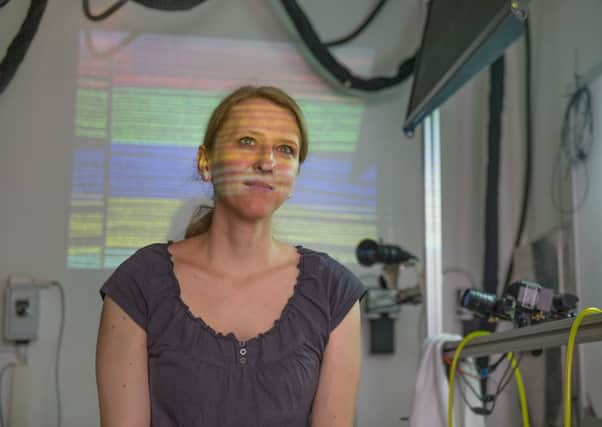Neuroscientists celebrating brain wave for troubled minds


Brain oscillations – often known as brain waves – caused by electrical waves pulsing through grey matter have puzzled experts since their discovery by German psychiatrist Hans Berger in 1924.
Neuroscientists from Glasgow University have now found that each area of the brain has its own characteristic mix of rhythms, which could be read like a fingerprint using magnetic waves.
Advertisement
Hide AdAdvertisement
Hide AdThe findings could help to identify brain abnormalities in ill patients, with the potential for electric or magnetic stimulation to modify abnormal rhythms, according to a study recently published in the Plos One journal.
Dr Anne Keitel, a postdoctoral researcher at Glasgow University’s Centre for Cognitive Imaging, said: “When you look at all 115 areas of the brain you can find totally different rhythms. It seems a bit messy at first so we wanted to see if we could classify what was going on so we could see what to expect.”
A group of 22 healthy adults were asked to simply sit still for a few minutes with their eyes open while their neural activity was monitored.
By measuring the magnetic fields produced by brain activity, the team were able to establish which part of the brain it came from and to analyse the individual rhythms.
Some parts of the brain had just two relatively slow oscillations, indicating that this part was focused on a single specific task.
Meanwhile, in other areas where the brain was learning or enacting rewards, there could be up to nine different rhythms taking place as these regions are performing complex tasks and communicating with a number of different regions of the brain.
The brain activity among the volunteers was so similar that the scientists believe they could identify these waves based on their individual rhythm, without knowing where exactly they came from.
Keitel said: “The possibilities we have now are endless. We now know what the brain activity looks like in a young, healthy brain so we can use this as a standard.
Advertisement
Hide AdAdvertisement
Hide Ad“We can look at the brain activity of people with some form of mental disorder or older people who are struggling with neurological disorders.”
Keitel hopes this advance could also help treatments, as it could pinpoint the abnormal rhythms that could be causing illnesses.
Electric or magnetic stimulation in specific part of the brain has been shown in recent studies to alleviate symptoms of anxiety and depression in people with post traumatic stress disorder (PTSD).
Keitel said: “There have been some really promising studies done on this kind of stimulation in patients with PTSD and Alzheimer’s.
“What we hope we have done is found a way to identify the area of the brain that needs to be looked at – like a map.”
The testing is so simple and non-invasive that it could be done on people with severe disabilities.
The team now hopes to look at the brains of older people to identify any differences.